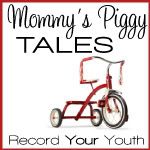
Harvest at the Splear Farm 2010
The fall season has always been my favorite: kids returning to school, cheering for the home team at football games, “leaf peeping” as the trees miraculously transform from boring greens to glorious autumn colors, and watching the harvest progress from field to field, restoring the wide open spaces to the land I love.
Once the harvest is complete, we’ll be able to once again enjoy an unobstructed view from horizon to horizon, some ten miles or more in each direction. This is God’s Country and, for me, the best place on earth to live, in spite of all the dirt, grime and grunge involved in the harvest.
I was raised on a fifty-acre farm just outside a small town in central Illinois (the Prairie State). Dad worked long hours as a welder in a factory, plus he farmed corn or beans in his “spare” time. We lived ten miles from a community of about 30,000 and some sixty miles from Chicago, in the middle of the grain heartland.
In my mind, it was the perfect place to raise a large family. We had the best of both worlds: a wholesome country lifestyle with a strong sense of community and all the urban benefits of good schools and plenty of cultural activities to keep seven kids challenged and out of trouble.
When I was a teenager and brought dinner out to Dad in the field during harvest, I was struck by all the physical sensations that assaulted me. During this time of year, when I watch the huge combines run through the fields, those memories are especially vivid in my mind. Here is a more fanciful version of what I remember experiencing as a kid:
The behemoth rolls through the tawny gold field, devouring everything in its ponderous path, spewing out an enormous horizontal whirlwind of chaff, dirt and stalks behind it. Slowly, inexorably, it consumes dozens of rows at a time, cutting a swath through stems bursting with soybean pods. In one fell swoop, the machine separates the precious beans from pods and stems, storing them temporarily in its enormous belly.
I stand beside the tractor, waiting for the monster to disgorge its contents into the first grain wagon. The noise is deafening, even though I try to block my ears. As bad as the noise is, the grit is even worse. The handkerchief tied across my mouth and nose does essentially nothing to keep the fine grit from permeating my mouth, my nostrils, my throat, my lungs, and even my ears.
By the end of the long day, I will feel as if the grit has invaded clear to my eye sockets through every pore of my body. The combination of taste, smell and grubbiness of the grit lingers for days after the harvest is completed, in spite of long, hot showers. I struggle to hold back the inevitable coughing fit, at least until the monster moves past me to the second wagon. Sometimes I even succeed, but barely.
Today, almost 50 years later, there is still a lot of grit, dirt, and chaff thrown out from the combine, but most machines now have enclosed cabs that are climate-controlled. While a side benefit is the comfort of the driver, more importantly it protects the sensitive GPS and other electronic equipment typically installed to monitor crops.
As advanced as farming technology has become, unfortunate accidents continue to happen. Late one autumn evening, I was heading home from a town about eighty miles away, driving through the country. Noticing a warm red glow in the distance, I thought to myself, “What a glorious sunset we’ll have tonight.” My stomach lurched when I realized the radiance was coming from the east. As I drove closer, it became apparent that the source was from a corn field that was on fire.
Lord willing, I will never see such a fearsome sight again. Flames shot into the air, surrounded by huge clouds of acrid, billowing smoke. The farmer scrambled ineffectively to create a fire break with a field cultivator, while the lone fire truck did its best to slow down the marching blaze. Continuing on toward home, I met several more pumper trucks arriving. They did not save much of that particular 160 acre field, but they were able to keep it from spreading to the surrounding fields and homes.
The next time you see a piece of farm equipment working in a field (or perhaps slowing you down on a country road), wave to them in appreciation of their dedication to put food on our tables. You’ll find they almost always wave back, with a smile on their grubby faces.
Do you have a favorite Fall or harvest memory? I'd love to hear it!





2 comments:
Hi Beth: I love all your memories of fall, and I share some of the same things with great joy.
However, I noticed that in a previous post your favorite season was spring.
Are you, like me, one who loves the change in seasons and your favorite is "the season of today." Just askin' ha ha...
Karen, you caught me! Actually, when I was a kid, Fall was my favorite & Spring was my least favorite because of all the rain & mud. As I've gotten older, Spring is now mostly my real favorite, especially after a long winter.
But on the other hand...I do love to see the seasons change. So, yep, that sounds like your "season of today." Very apt description - thanks!
Post a Comment